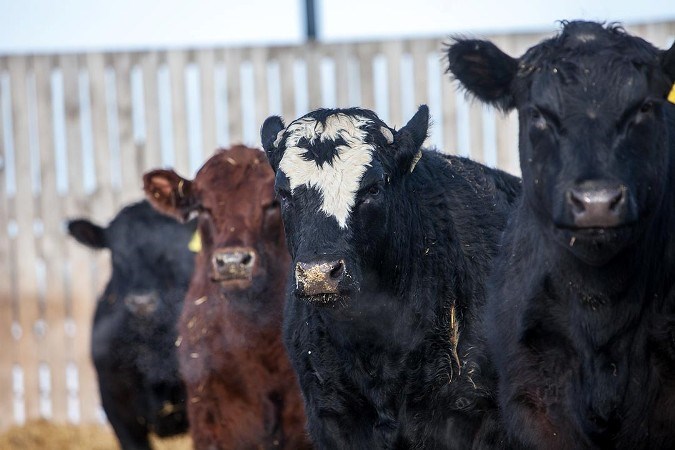A multi-agency research team led by University of Saskatchewan veterinary reproductive biologist Dr. Gregg Adams (DVM, PhD) aims to make rapid strides in improving the productivity, efficiency and sustainability of Canada’s $18-billion beef sector by integrating advances from the field of omics into livestock production.
“USask has an amazing facility and program centred around the Livestock and Forage Centre of Excellence, and expertise in all areas of livestock production, but one thing that has been missing is a genomic component,” said Adams.
Genomics and other omics tools in biological science — such as phenomics, microbiomics, proteomics — involve the study of the appearance, structure and behaviour of animals, their microbiomes and cell proteins. Researchers have made tremendous progress in these areas over the past decade, and they can now use these advanced tools for extensive livestock production, he said.
The beef cattle industry is tremendously important in the West, with Saskatchewan and Alberta accounting for 70 per cent of Canada’s beef production, Adams said. Consequently, even incremental changes in performance translate into big gains in economic value and job growth.
Adams’ Integrated omics for sustainable animal agriculture and environmental stewardship (IntegrOmes) project has been awarded $6.75 million over five years by the Canada Foundation for Innovation , with another $10.1 million expected from institutional partners, private industry and vendor in-kind support.
By bringing together experts in microbiology, epidemiology, reproductive biology and forage nutrition, the project aims to integrate the advances in omics tools to address challenges in the beef industry such as disease management, fertility improvement and environmental impact mitigation — something already in place in the dairy, hog and poultry industries.
The first step is to gather reams of previously unavailable behavioural and other physical data on beef cattle by placing multispectral cameras in pastures and close confinement areas and linking the information with gene markers for desired traits, said Adams.
“Once we identify these markers — the genomic characteristics that relate to performance we can actually begin to collect the genetic material — the germplasm, embryos and semen from those individuals that have desirable characteristics,” he said.
The goal of IntegrOmes is to make it easier for cattle producers to identify and breed animals with desired traits such as better meat quality, stronger disease immunity, healthy uterine and semen microbiomes, shorter gestation periods, and good maternal behaviour and heavier calf weights at weaning.
To accommodate the collection, processing, sorting and cryopreserving of bulls’ semen and cows’ eggs, and creating and preserving embryos, IntegrOmes is establishing a biobank at the LFCE that fits hand-in-glove with the genomic tools researchers will use. The biobank will serve the needs of the beef livestock industry as well as bison conservation efforts — the other facet of Adams’s research included in the CFI award.
As well, IntegrOmes researchers are using genomics to develop rapid diagnostic tools for diseases and antimicrobial resistance that have been troublesome for the beef industry.
“If we can put these tools in the hands of diagnosticians or farmers themselves, they can report the results immediately — within hours or a day rather than having to wait days or even weeks — then we can cut the head off an epidemic, or certainly focus on appropriate antibiotics,” said Adams.
“This project has been two years in the making, and it’s created a lot of enthusiasm and momentum,” he said. “Once the infrastructure and equipment are in place and we become proficient in its use, the impact will be felt for a generation or more.”
USask researchers on the IntegrOmes project include: Cheryl Waldner, Janet Hill, Dinesh Dadarwal and Jaswant Singh, all from the Western College of Veterinary Medicine, and Matthew Links from the College of Agriculture and Bioresources. Other team members are Gabriela Mastromonaco (Toronto Zoo); Jocelyn Poissant (University of Calgary); Graham Plastow (University of Alberta); and Muhammad Anzar (Agriculture and Agri-Food Canada).



